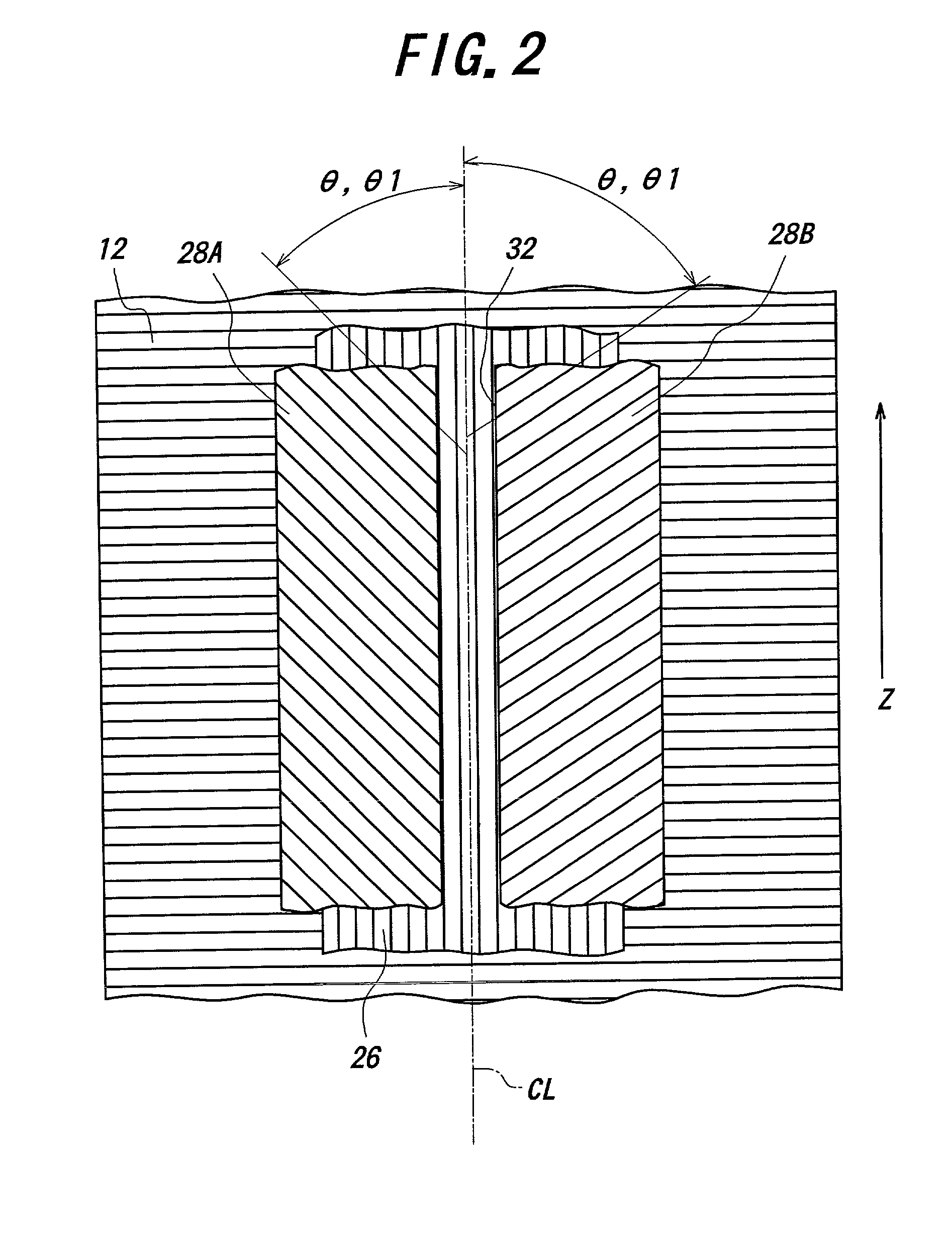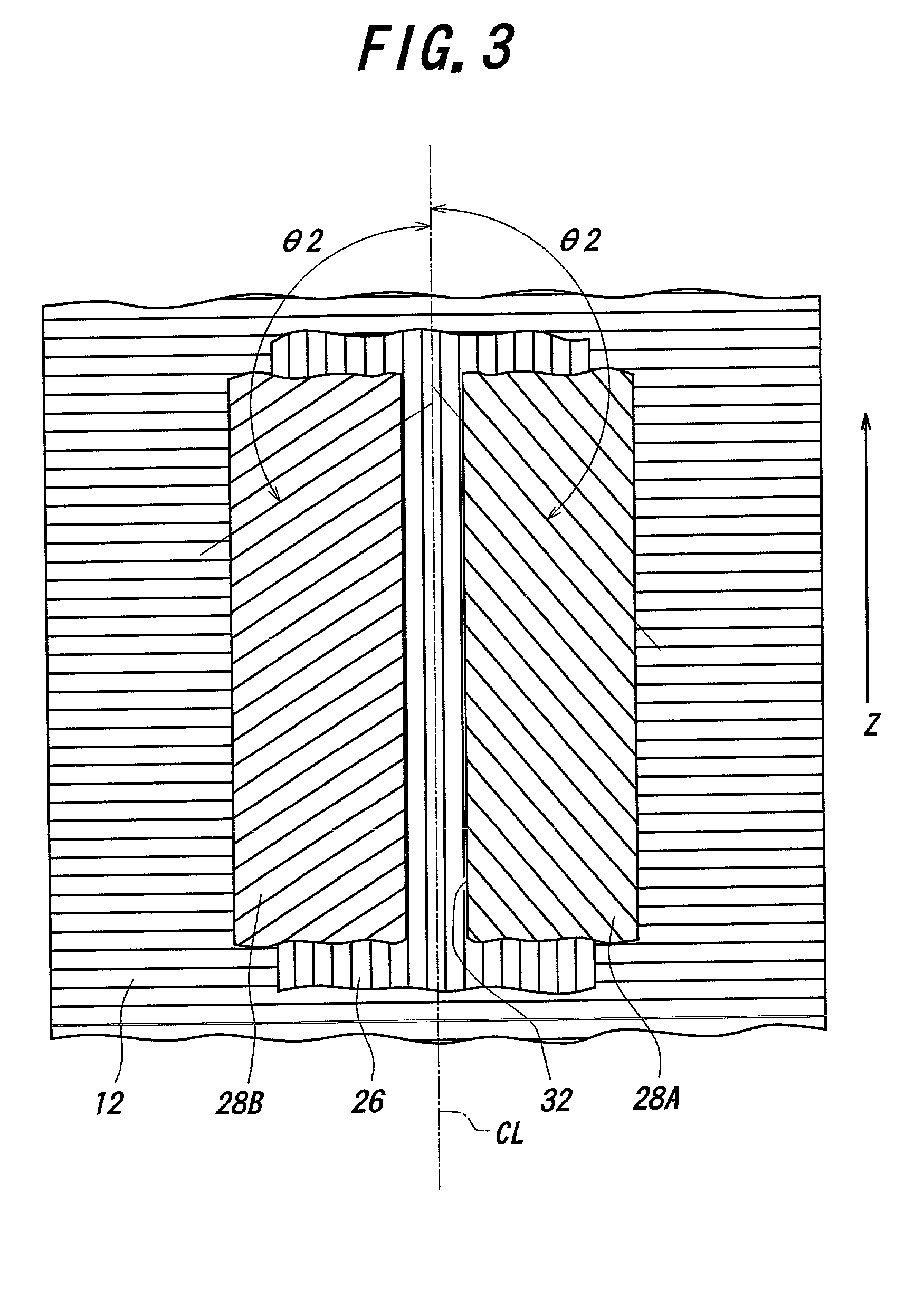Method of mounting a pneumatic radial tire
a radial tire and pneumatic technology, applied in the field of pneumatic radial tires, can solve the problems of insufficient balance of rigidity, ground contact property and generation of lateral force in the tire, and convergence of vibration behavior in the vehicle body,
- Summary
- Abstract
- Description
- Claims
- Application Information
AI Technical Summary
Benefits of technology
Problems solved by technology
Method used
Image
Examples
Embodiment Construction
uses the pneumatic radial tire 10 described in the first embodiment and Example 2 uses the pneumatic radial tire 10 described in the second embodiment. For the comparison, the conventional example uses a tire with a belt structure having no pair of cross belt members 28A, 28B and the comparative example uses a tire having a spiral belt 26 and a pair of cross belt members 28A, 28B except that the cord inclination in the pair of the cross belt members takes a herringbone form in a front tire and an inverted herringbone form in a rear tire. With respect to these examples, the actual running test is carried out to obtain results as shown in Table 1.
1 TABLE 1 Corner gripping High-Handling Grip- Slipping speed Quick Neutral ping control- stability Shimmy response property limit lability Conventional 100 100 100 100 100 100 Example Comparative 110 110 110 100 105 105 Example Example 1 130 120 130 120 120 120 Example 2 120 120 120 110 110 110
[0063] The evaluation by the actual running test ...
PUM
| Property | Measurement | Unit |
|---|---|---|
| width | aaaaa | aaaaa |
| angle | aaaaa | aaaaa |
| width | aaaaa | aaaaa |
Abstract
Description
Claims
Application Information
 Login to View More
Login to View More - R&D
- Intellectual Property
- Life Sciences
- Materials
- Tech Scout
- Unparalleled Data Quality
- Higher Quality Content
- 60% Fewer Hallucinations
Browse by: Latest US Patents, China's latest patents, Technical Efficacy Thesaurus, Application Domain, Technology Topic, Popular Technical Reports.
© 2025 PatSnap. All rights reserved.Legal|Privacy policy|Modern Slavery Act Transparency Statement|Sitemap|About US| Contact US: help@patsnap.com



